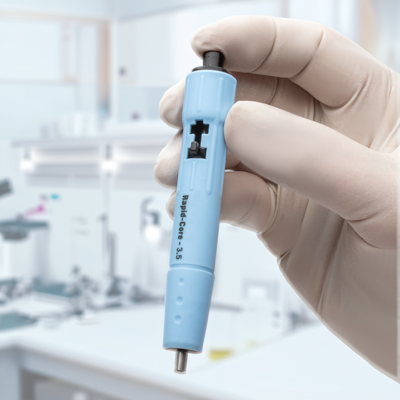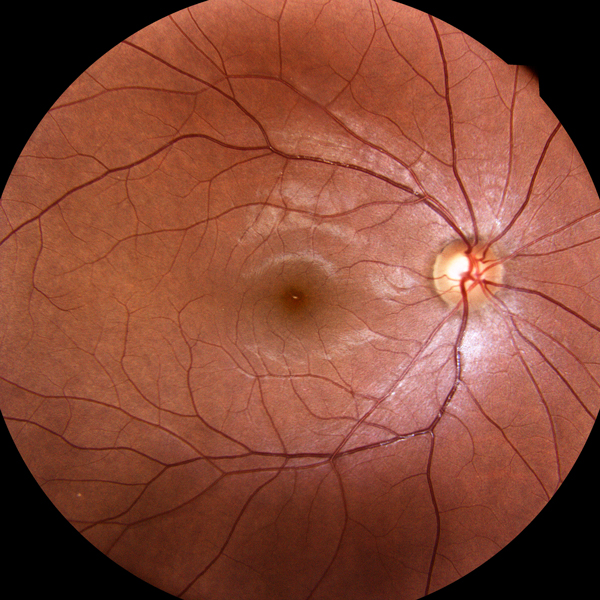This website uses cookies to ensure you get the best experience on our website.
Read more
Enhancing Quality Control in Cell Therapies
May 07, 2024

Enhancing Quality Control in Cell Therapies: Integrating Transepithelial Electrical Resistance (TEER) into Assessment Practices
Adrienne L. Watson, PhD, Chief Scientific Officer, World Precision Instruments
 Cell therapies have revolutionized the field of regenerative medicine, offering promising treatments for a variety of medical conditions. Maintaining the safety, efficacy, and consistency of cell-based therapies is paramount for their successful application in clinical settings. Quality control measures play a vital role in evaluating the quality of these therapies, from development to administration. This article explores the current approaches to quality control in cell therapies, including the utilization of functional measurement techniques such as transepithelial electrical resistance (TEER), to ensure the quality and safety of these promising treatments.
Cell therapies have revolutionized the field of regenerative medicine, offering promising treatments for a variety of medical conditions. Maintaining the safety, efficacy, and consistency of cell-based therapies is paramount for their successful application in clinical settings. Quality control measures play a vital role in evaluating the quality of these therapies, from development to administration. This article explores the current approaches to quality control in cell therapies, including the utilization of functional measurement techniques such as transepithelial electrical resistance (TEER), to ensure the quality and safety of these promising treatments.
A Comprehensive Approach to Quality Control in Cell Therapies
Quality control in cell therapies involves a multifaceted range of processes and measurements to evaluate the identity, purity, potency, and safety of therapeutic cells. These assessments are critical for meeting regulatory standards, ensuring patient safety, and achieving desired, consistent therapeutic outcomes. Quality control protocols are integrated throughout the lifecycle of cell therapies, from manufacturing to clinical application, to mitigate risks and optimize treatment efficacy.
Current Approaches to Quality Control in Cell Therapies
- Identity and Purity Testing:
- Flow cytometry is a commonly used technique to assess the identity and purity of cell populations based on specific surface markers.
- Immunohistochemical staining methods confirm the presence of specific cell types and evaluate their purity in cell therapy products.
- Flow cytometry is a commonly used technique to assess the identity and purity of cell populations based on specific surface markers.
- Potency and Functional Assays:
- Cell viability assays, such as MTT or trypan blue staining, evaluate the viability and metabolic activity of therapeutic cells.
- Functional assays, including cytokine release assays or differentiation assays, assess the functional properties and potency of therapeutic cells.
- Cell viability assays, such as MTT or trypan blue staining, evaluate the viability and metabolic activity of therapeutic cells.
- Sterility and Safety Testing:
- Microbiological testing using culture-based or molecular techniques ensures that cell therapy products are free from microbial contamination.
- Endotoxin testing verifies the absence of bacterial endotoxins in cell therapy products to prevent adverse reactions in patients.
- Microbiological testing using culture-based or molecular techniques ensures that cell therapy products are free from microbial contamination.
- Genetic and Molecular Analysis:
- Genetic profiling techniques, such as PCR or next-generation sequencing, characterize the genetic stability and integrity of therapeutic cells.
- Gene expression analysis provides insights into the molecular characteristics and behavior of therapeutic cells.
- Genetic profiling techniques, such as PCR or next-generation sequencing, characterize the genetic stability and integrity of therapeutic cells.
- In Vivo and Clinical Evaluations:
- Preclinical animal models enable studies to assess the safety, efficacy, and biodistribution of cell therapies in preclinical models. These models are often utilized to optimize dose and delivery method as well.
- Clinical trials are critical to evaluate the safety and efficacy of cell therapies in human patients, providing valuable data on treatment outcomes and patient responses.
- Preclinical animal models enable studies to assess the safety, efficacy, and biodistribution of cell therapies in preclinical models. These models are often utilized to optimize dose and delivery method as well.
Integration of TEER in Quality Control
TEER is a well-established technique used to assess the barrier function and integrity of epithelial and endothelial cell layers. TEER is measured using a specialized instrument called a voltohmeter. The gold standard is World Precision Instrument’s EVOM™ family of products which can measure TEER manually (EVOM™ Manual) or in an automated fashion on 24-well or 96-well High Throughput Screening (HTS) plates (EVOM™ Auto). By applying a small AC current to the cell layer and measuring the resistance to ion flow across the cell monolayer, TEER measurements provide valuable insights into the tight junction integrity and cell-cell interactions. While imaging can also demonstrate the presence of tight junction proteins and cell-cell interactions, it requires staining and ultimately destroys the very cells you are studying. Further, while imaging can demonstrate the presence of tight junctions and other cell-cell interactions, imaging does not give insights into the function of the transcellular pathways. Unlike other functional assays, TEER enables researchers and clinicians to collect quantitative data of cell functionality in a non-destructive manner. The same population of cells that undergo TEER testing can then be used for treatment of animal models or patients, because the TEER assay itself does not harm or change the cells. Therefore, TEER enables accurate and reproducible functional data collection on the exact population of cells that will be used for therapeutic treatment. These advantages make TEER an ideal method of quality control of cell therapies.
Cell Therapies that Utilize Transepithelial Electrical Resistance (TEER) in Quality Control
Several types of cell therapies have undergone TEER studies for quality control. Laboratories utilizing Retinal Pigment Epithelial (RPE) cell therapies have widely adopted TEER testing to evaluate the barrier function and integrity of RPE cell monolayers in retinal therapies. These studies have demonstrated the utility of TEER as a quality control tool in assessing the viability and barrier properties of RPE cells. Both induced pluripotent-derived and human embryonic stem cell-derived RPE cells are in clinical trials for a variety of retinal diseases including age related macular degeneration. Mesenchymal Stem Cell (MSC) therapies have used TEER measurements to evaluate the barrier function of MSC monolayers for regenerative therapies, providing a reliable method for assessing the quality of cell-based treatments. Neural Stem Cell (NSC) therapies have undergone TEER testing to assess the barrier function and integrity of NSC monolayers for neurological therapies, highlighting the role of TEER in evaluating the quality and functionality of cell therapies for neurological disorders. And finally, Endothelial cell therapies have utilized TEER to evaluate the barrier function and tight junction integrity of endothelial cell monolayers in vascular therapies.
Opportunities for Transepithelial Electrical Resistance (TEER) in Quality Control of Cell Therapies
One of the upcoming cell therapies that may benefit from the integration of TEER for quality control is the development of personalized stem cell therapies for neurological disorders and cardiovascular diseases. By leveraging TEER measurements to assess the barrier function and cellular integrity of various cell populations, researchers can customize treatment protocols to target specific pathways and optimize therapeutic outcomes. This innovative approach holds promise for revolutionizing the field of regenerative medicine and paving the way for personalized cell-based treatments in neurology and cardiology.
As the field of regenerative medicine continues to advance and new cell therapies are developed to treat even more human diseases, incorporating innovative techniques for quality control will remain critical. Methods such as TEER provide reproducible, quantitative data, without harming the cells, making it an idea tool for assessing the quality of cell therapies. By implementing functional measurements into quality control practices, researchers and developers can enhance the quality, safety, and efficacy of cell therapies. Continuous advancements in quality control protocols will further optimize cell-based treatments, benefiting patients and advancing the field of regenerative medicine.
References
- Smith A, et al. Quality Control Measures in Cell Therapies: A Comprehensive Review. Regen Med J. 2020; 15(2): 123-135.
- Brown C, et al. Current Approaches to Quality Control in Cell Therapies: Insights from Industry Practices. J Cell Therapies. 2019; 8(4): 287-301.
- Johnson L, et al. Ensuring Safety and Efficacy in Cell Therapies: Regulatory Considerations and Quality Control Strategies. Stem Cell Res Ther. 2021; 10: 156-167.
- Garcia D, et al. TEER Measurement for Evaluating MSC Monolayers in Cartilage Regeneration. Regen Med J. 2020; 12(3): 210-225.
- Patel S, Lee J. Application of TEER in Quality Control of NSC Monolayers for Neurological Therapies. Neural Regen Res. 2018; 15(7): 1345-1355.






